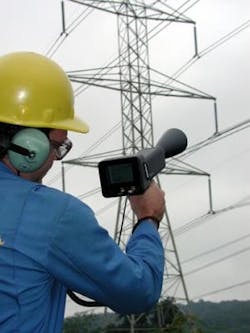Light touch: Predictive maintenance for electrical systems: Part 2
The potentially catastrophic consequences of electrical system failures and hazards must be avoided at all costs. Regular predictive maintenance (PdM) on electrical systems lets maintenance teams detect and correct problems before they can shut down equipment or production lines or cause a safety incident.
Whether conducted in-house or outsourced to reliability specialists, PdM inspections – followed up with timely, precise repairs – can protect against electrical accidents and save companies millions of dollars by reducing unscheduled downtime, lowering equipment maintenance costs, and extending the useful life of machinery.
Is your electrical PdM program up to snuff? Here, check out some of the newest electrical PdM tools and applications as well as popular testing options and practical PdM recommendations from industry pros.
Fresh approaches and new applications
A host of new tools and tactics are being used to inspect electrical system components. For example, EASA’s Bishop has seen increasing use of semi-automated measuring equipment along with software to analyze and trend data.
FLIR is integrating thermal imaging into standard test equipment, as with the company's new Infrared Guided Measurement (IGM) line, consisting of digital multimeters and clamp meters. “IGM allows users to thermally scan equipment and enclosures to see where the problems are before they start hooking up test leads or start other troubleshooting measures,” says Huekels.
The ubiquity of wireless connectivity, greater computing power, and the lower cost of memory have made it possible for test tools to automatically save data to a smartphone or other connection point and then transmit it to the cloud for storage and analysis, says Weishung Liu, product planner at Fluke Industrial Group.
For example, Fluke test tools now have embedded Bluetooth radios, allowing the user to instantly save measurements to the software-as-a-service (SaaS) platform via a smart device. “Wireless sensors from Fluke allow technicians and engineers to leave measurement tools in place over a period of time to monitor, data-log, live-stream, and analyze key data collected," explains Frederic Baudart, Fluke Connect product specialist. "Teams use these sensors for condition monitoring mainly for commissioning and troubleshooting complex system failures,” he says.
One of the newest thermal imaging applications involves installed photovoltaic (PV) panels. “Compared to properly operating solar cells, defective solar cells operate at higher temperatures and are readily seen with a thermal imager. Infrared imaging can also detect thermal anomalies caused by faulty wiring,” remarks Infraspection Institute’s Seffrin. “Imaging may be conducted on foot using a handheld thermal imager to inspect the top or underside of operating panels. Or, for large installations, it may be conducted using purpose-built unmanned aerial vehicles (drones) or from a helicopter using a high-resolution thermal imager.”
Finds and saves justify the investment
In addition to helping keep workers safe, electrical PdM can offer a compelling return on investment from a production perspective. “Finding one electrical problem before it burns up or blows up can save a significant amount of time and money,” says FLIR’s Huekels. “One save/find can pay for the all the thermal cameras you deploy in your facility 100 times over. Especially in a product line environment, a facility has to factor in its loss in production revenue for every hour that production is offline. It can be hundreds of thousands of dollars.”
Schneider Electric’s Kourounis describes a recent customer example in which abnormally elevated C-phase temperature readings obtained through connected temperature monitoring of a 30-year-old dry-type transformer helped a facility director convince key decision-makers that the transformer was unreliable and could be at risk of failure. A similar experience at a sister substation four years prior cost the company close to $1 million in losses. Efforts are underway to replace the aging transformer.
For EASA’s Bishop, detection of unbalanced voltages and currents has led to corrective actions that reduced the power loss and heating of electric motors and other three-phase loads. “Not only was electrical energy use reduced," he says, "but motor and other equipment reliability was increased. Corrective actions as a result of these early findings reduced the direct cost of motor repair and the indirect cost of downtime for the driven equipment.”
When documenting the savings from PdM, it's important to include downtime avoidance as well as any dollars saved from scrap or product imperfections related to production downtime, adds UE Systems’ Messer.
Top tips from industry pros
What else can you do to optimize your electrical PdM? Consider the following recommendations from industry pros.
Always look at all of the sections of the plant’s electrical system – from power coming into the plant to the drives and invertors, switchgear and motor controllers, and the motor that turns the pump or fan doing the actual work, says Fluke’s Bernet. “Any link in this chain is a potential failure and can lead to machine downtime, lost production, and increased maintenance costs,” he notes.
Whether you're doing inspections internally or using an outside service provider, insist on a multitechnology approach, suggests UE Systems’ Waetjen. “One technology cannot address all of the potential failure modes," he says, "so you will be putting your people and your equipment at risk if you limit yourself to one.”
FLIR’s Huekels recommends having maintenance personnel carry some thermal imaging tools to use in regular checks throughout the workday and having IR windows installed in all electrical enclosures to minimize exposure to arc flash dangers.
[sidebar id="6"]
Infraspection Institute’s Seffrin cautions that thermal imaging is not a “point and shoot” technology, despite claims to the contrary. “Proper application of the technology requires a trained and experienced operator who is familiar with the equipment being inspected," he says. "Thermographers should be certified and follow recognized infrared inspection standards, such as those published by Infraspection Institute.”
As experienced personnel are nearing retirement, capturing critical data and accurately interpreting the data in a digital world becomes imperative, comments Schneider Electric’s Kourounis. At the same time, leveraging the IoT will help move a facility into next-generation asset performance management. “When replacing aging infrastructure, consider switching to IoT-ready equipment,” he suggests.
EASA’s Bishop suggests using digital equipment that can store and compare the measured data at each interval when tests are performed and always making sure equipment is calibrated for greater assurance that the readings are accurate and repeatable.
Bishop also cautions that sometimes PdM activities are given low priority. “Focus on maintaining the schedules and make certain that PdM personnel are not reassigned to other functions," he urges. "Alternatively, consider outsourcing some or all of the activities if the schedules are at risk. Finally, when issues are detected, corrective actions should be carried out expeditiously.”




